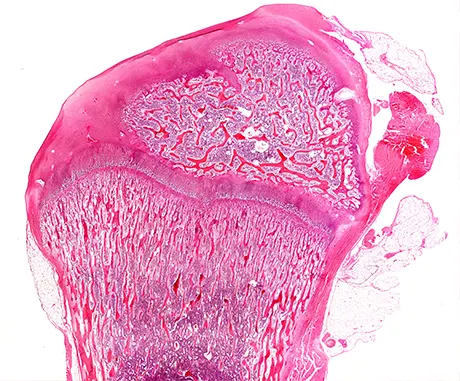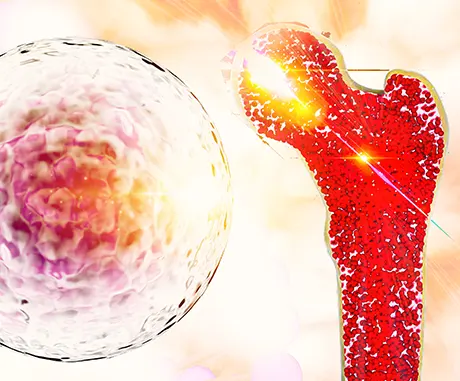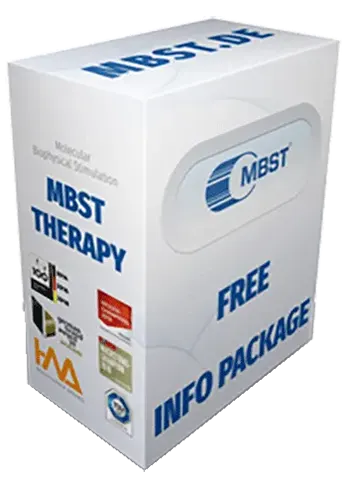
Bone cells · Osteoblasts
The bone is a dynamic organ which is subject to constant significant changes due to remodelling processes. It has the unique ability to regenerate and is able to transform mechanical and metabolic stimuli into regeneration. About ten percent of all bone tissue is restructured each year. The healthy, dynamic balance between bone formation (osteogenesis) and bone resorption (osteolysis) is called bone homeostasis. An imbalance can lead to osteoporosis or inflammatory bone loss. The cells involved in the process are chondrocytes, osteoblasts, osteocytes and osteoclasts.
Osteoblasts permanently form new bone mass, while osteoclasts dissolve old bone mass. If degradation outweighs formation, bone loss, osteoporosis, occurs. For bone reconstruction, osteoblasts attach themselves to bone like a skin layer and thereby indirectly form the basis for new bone substance. Building and degrading cells in the bone thus practically form a working group that is coupled to each other.
Bone healing · Fracture healing
Since bones are constantly renewed, they can also heal after a fracture. The healing process after a bone defect, such as a broken bone, is called fracture healing. There is a distinction made between primary and secondary fracture healing. Disorders in this process can lead to pseudarthrosis. While primary fracture healing is usually completed after three weeks, secondary fracture healing can take up to 24 months.
Despite advanced care and appropriate surgical methods, up to 20% of all fractures have a delayed or even no healing tendency.
Osteoporosis · Bone atrophy
With the prolonged life expectancy, the number of osteoporosis patients also increases. Not only women are affected but also an increasing number of men, but this is still not sufficiently taken into account and investigated worldwide.

Bone metabolism
Even organs that appear stable, such as bone tissue, have an intensive metabolism. Bone metabolism is the term used to describe the biological processes that form and break down bone substance (bone remodelling) and also supply the bone cells. Diseases that affect bone metabolism are often the reasons for deformities of skeletal bones, a fragile bone structure and pain.
To maintain the dynamic balance of remodelling, there are about 1–2 million microscopic remodelling areas in humans called basic multicellular units (BMUs). Resorption by the osteoclasts takes about three weeks, while the time osteoblasts require for formation of new bone matrix is 3–4 months.

